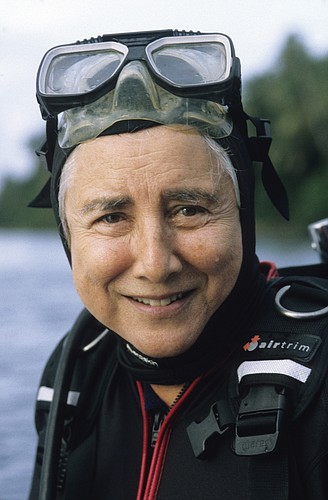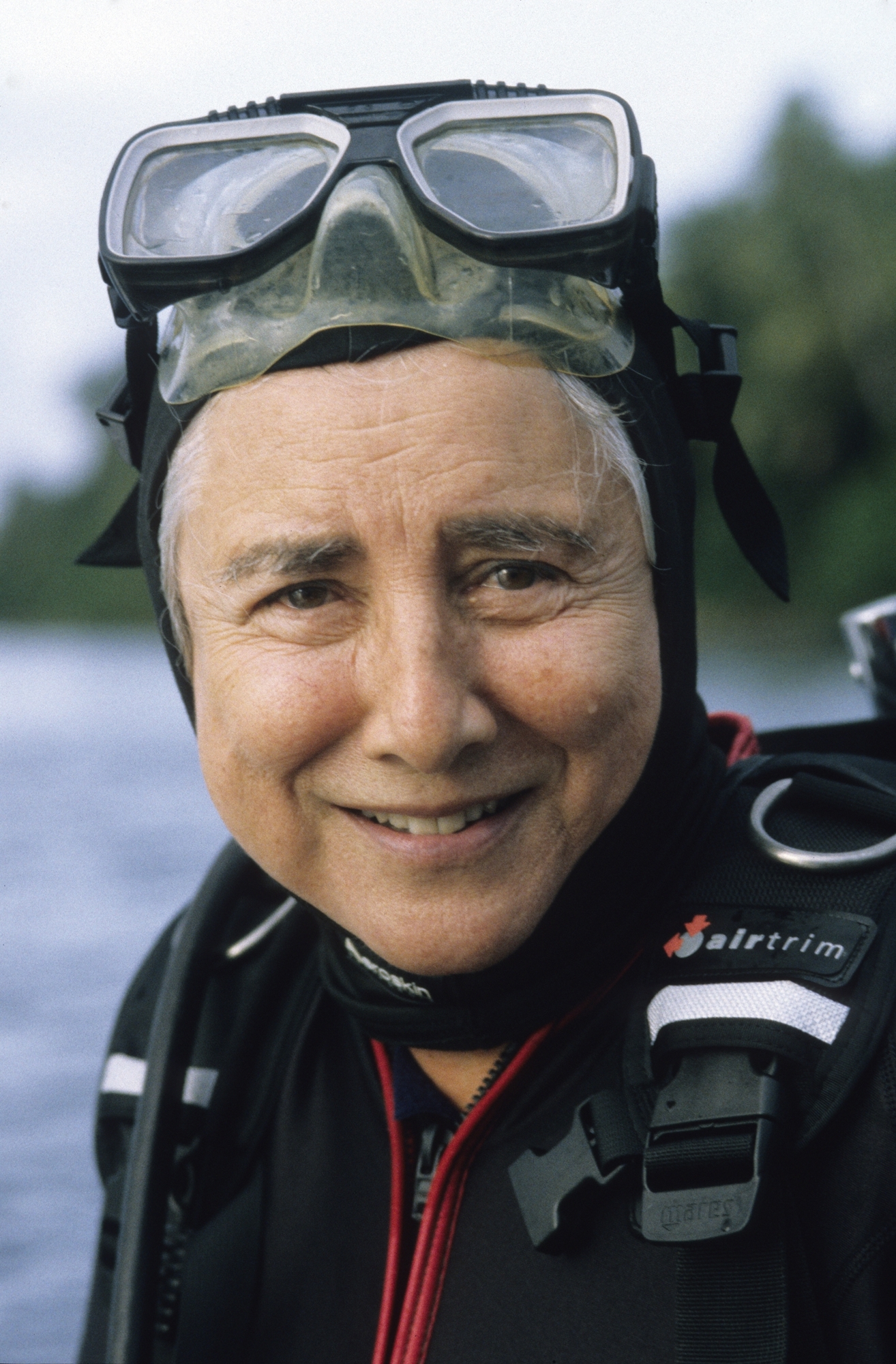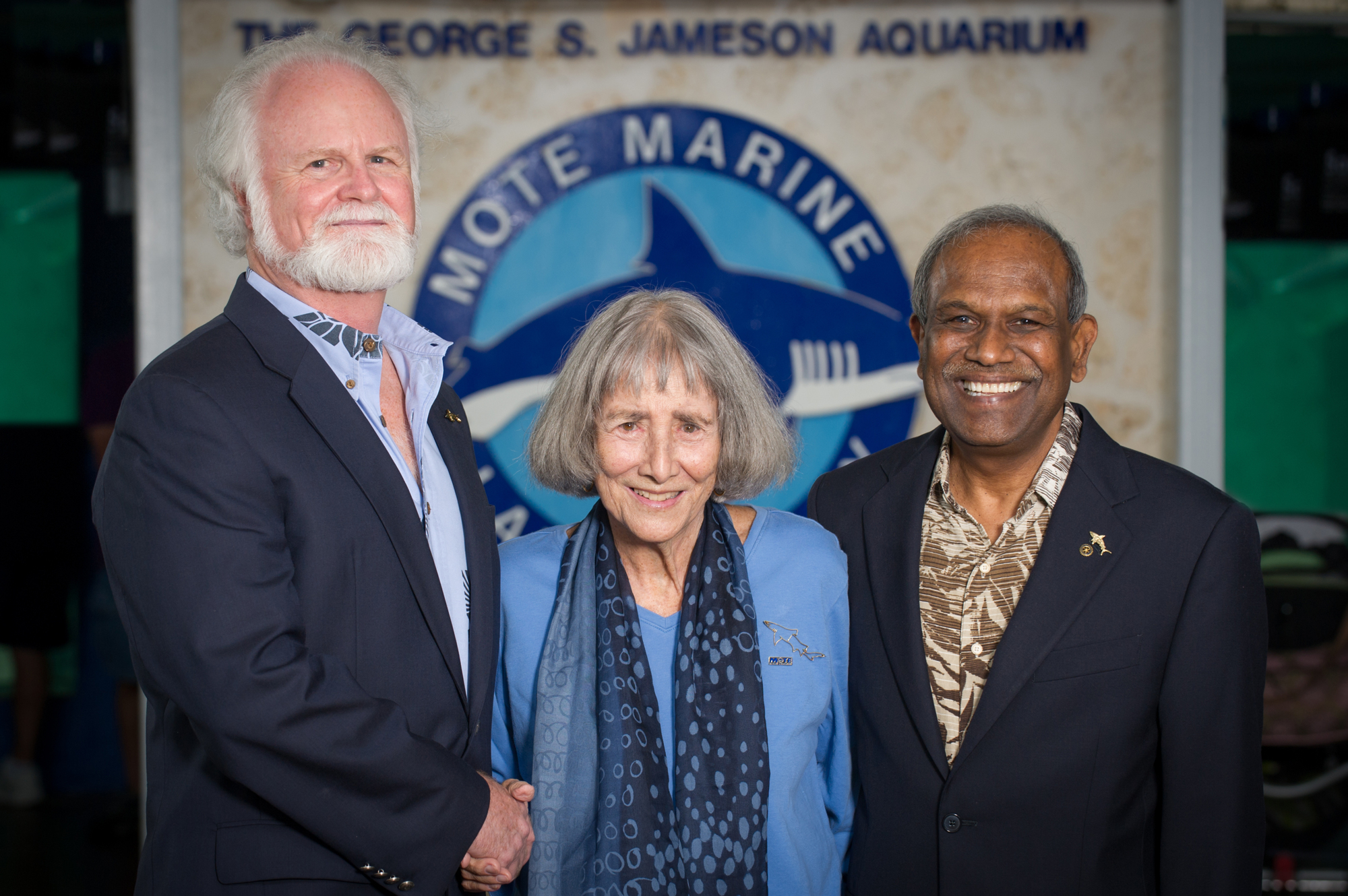- April 19, 2024
-
-
Loading

Loading



Eugenie “Genie” Clark needed help with the heavy gear when she made her second-to-last dive last year. It was her 92nd birthday, and she was battling lung cancer. She sat in a plastic chair in the waters of the Gulf of Aqaba while fellow divers helped her gear up.
After she was underwater, she needed no assistance.
“The minute she went into the water, she was as graceful as a ballerina,” said Mote Marine Laboratory and Aquarium President/CEO Michael Crosby, who and senior scientist at Mote, it wasn’t just Clark’s research that made her extraordinary. She had the ability to put complex scientific matter in simple terms, which made her a popular public figure.
“There are a lot of great scientists throughout the world, but what was unique is, she could communicate her excitement with others,” said Kumar Mahadevan, president emeritus and senior scientist of Mote.
Mahadevan remembers reading Clark’s book as a graduate student in his native India.
“There are a lot of people who read this book, and that’s the reason they wanted to become a scientist,” he said.
Former Mote Volunteer Board President Ron Johnson remembers taking his daughter and grandson to meet the famed Shark Lady several years ago.
“My daughter was teaching in the middle of Texas from Genie’s book,” Johnson said. “(Genie) wanted to know all about what she was teaching.”
Born May 2, 1923, Clark developed a love of the ocean as a child in New York City.
“On Saturdays, my mother worked only half a day, and in the afternoons I would beg her to take me to the aquarium at Battery Park,” Clark told the Longboat Observer in 2003. “I was fascinated. I used to pretend I was walking on the bottom of the sea.”
Clark majored in zoology at Hunter College and went on to earn her master’s degree and Ph.D. from New York University while teaching swimming during the evenings and weekends. As a Fullbright Research Scholar, she spent the year studying fishes in the Egyptian town of Ghardaqa, located on the Red Sea, which she described in her first book, “Lady With a Spear,” published in 1953.
In 1954, philanthropists William and Anne Vanderbilt invited Clark to give a talk in Englewood after they read her book. The couple’s 10-year-old son, Bill Jr., had a bedroom full of aquariums — just as Clark had when she was his age.
Clark didn’t think a lecture on the fishes of the Red Sea would generate much local interest, but as she displayed her colored slides, she learned from local fisherman that for each fish she showed, a similar fish had been observed in the waters of Englewood.
After the lecture, William Vanderbilt approached her about his wife’s idea of creating a local marine lab similar to the one Clark had described in her book and asked Clark if she would serve as its director. There were no demands, strings or contracts — it would just be “a place where people can learn more about the sea,” he told her.
Clark embraced the opportunity to conduct her research without worrying about profits or financial gain.
If mankind benefited from her research, that was a bonus.
“But that is not what drives me to study late into the night or to watch a fish on the sea bottom making some strange maneuver until all the air in my scuba tank is gone, and I hold my breath for those last few seconds of observation,” she wrote in “The Lady and the Sharks.”
So, in January 1955, she moved her family to Placida, where she established the Cape Haze Laboratory. She served as its director from 1955 to 1967, during which the laboratory moved to Siesta Key and changed its name to Mote, after Clark obtained the support of philanthropist William Mote.
Clark left Mote in 1968 to join the zoology faculty at the University of Maryland. She retired from the position in 1992 and returned in 2000 to Mote — which had moved to City Island in 1978 — as a senior scientist and director emerita.
Even in recent years, Clark continued to be an avid researcher at Mote. Just two or three weeks before her death, she had a paper published, and Crosby is confident that another paper will be published posthumously.
Crosby said that Clark’s natural curiosity was key to her success.
“She was always asking questions and wondering why did it fit that way, what’s happening here?” Crosby said.
Her casual observations about the Moses sole fish in the Red Sea and how it never seemed to be eaten by sharks led her to discover a shark-repelling substance the fish contained, for example.
But Crosby said that the laboratory’s independence and philanthropic support of the Vanderbilt family in her early career helped her to thrive.
“It was an absolutely essential ingredient in the early career of a young scientist,” Crosby said. “If she had not had that support, I would question whether she would have been able to accomplish what she was able to.”
When Mote celebrated its 60th anniversary in January and launched its Oceans of Opportunity campaign, Clark spoke in a short video about the importance of Mote remaining an independent laboratory.
“She wanted everyone to have the opportunity to follow their dreams in science, like she did,” Crosby said.
Clark is survived by her four children: Hera, Aya, Tak and Niki Konstantinou.
Mote will hold a public celebration of Clark’s life in early May to coincide with her birthday. In lieu of flowers, donations can me made to Mote through the Dr. Eugenie Clark Memorial Research Endowment Fund, mote.org/geniememorialfund.com.
Contact Robin Hartill at [email protected].